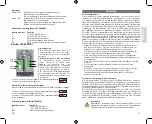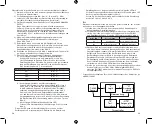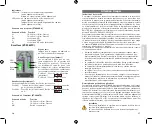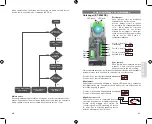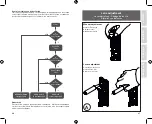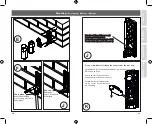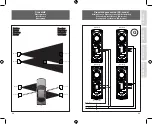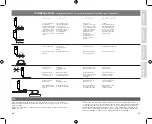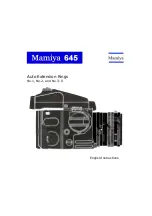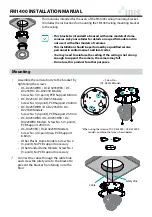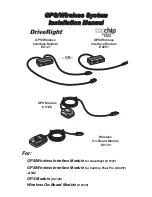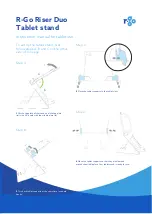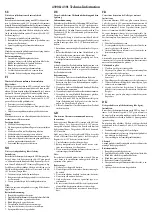
36
37
To avoid interference from inductive voltage /
current peaks, separate the proximity switch
cables from any other power cables. E.g.
Engine, contactor or solenoid cables
Incorrect
Correct
The cable should not be pulled
A proximity switch should not serve
as mechanical stop
Any repetitive flexing of the
cable should be avoided
Relief of the cable strain
Protection of the sensing face
Sensor mounted on a mobile carrier
Incorrect
> 100 mm
Correct
Incorrect
> 100 mm
Correct
Incorrect
Installation Hints
/ Installationshinweise / Conseils d’Installation / Installatiewaarschuwingen
Relief of cable strain
Protection of the
sensing face
Switch mounted on
mobile carrier
To avoid interference
from inductive
voltage/ current peaks,
separate the proximity
switch power cables
from any other power
cables, e.g. motor,
contactor or solenoid
cables
The cable should not
be pulled
A proximity switch
should not serve as
mechanical stop
Any repetitive flexing
of the cable should be
avoided
Schutz vor
Überdehnung des
Kabels
Schutz der
Sensorfläche des
Schalters
Mobiler
Näherungsschalter
Um Störungen durch
induktive Spannungs-/
Stromspitzen zu
vermeiden, Kabel der
Näherungsschalter
getrennt von anderen
stromführenden
Kabeln halten
Nicht am Kabel ziehen
Näherungsschalter
nicht als mechanischen
Anschlag verwenden
Wiederholtes Biegen
des Kabels vermeiden
Tension des câbles
Protection de la face de
détection du détecteur
Détecteur monté sur
support mobile
Pour éviter les
interférences issues des
pics de tension et/ou des
courants inductifs, veiller
à toujours faire cheminer
séparément les câbles
d’alimentation des
détecteurs de
proximité et les câbles
d’alimentation des
moteurs, contacts ou
solénoïdes
Eviter toute contrainte
en traction du câble
Ne jamais utiliser un
détecteur de proximité
en tant que butée
mécanique
Eviter toute répétition
de courbure dans le
cheminement du câble
Ontlast de kabelspanning
Bescherm het
detectievenster
Fotocel gemonteerd op
een mobiele steun
Houd de
voedingskabels van de
fotocellen gescheiden
van andere kabels (bv.
motor, ..) om storing
te vermijden van een
inductieve spanning of
stroompieken.
Trek niet aan de kabel
Fotocellen mogen niet
gebruikt worden als
mechanische stop
Repetitief buigen van
de kabel moet
vermeden worden
NEDERLANDS
ENGLISH
DEUTSCH
FRANÇAIS
Incorrect
> 100 mm
Correct
To avoid interference from inductive voltage /
current peaks, separate the proximity switch
cables from any other power cables. E.g.
Engine, contactor or solenoid cables
Incorrect
Correct
The cable should not be pulled
A proximity switch should not serve
as mechanical stop
Any repetitive flexing of the
cable should be avoided
Relief of the cable strain
Protection of the sensing face
Sensor mounted on a mobile carrier
Incorrect
> 100 mm
Correct
Incorrect
> 100 mm
Correct
Incorrect
To avoid interference from inductive voltage /
current peaks, separate the proximity switch
cables from any other power cables. E.g.
Engine, contactor or solenoid cables
Incorrect
Correct
The cable should not be pulled
A proximity switch should not serve
as mechanical stop
Any repetitive flexing of the
cable should be avoided
Relief of the cable strain
Protection of the sensing face
Sensor mounted on a mobile carrier
Incorrect
> 100 mm
Correct
Incorrect
> 100 mm
Correct
Incorrect
UL
Cable supplied with the operator for connection of a Class 2 circuit to an external device,
and cable supplied with an external device intended for connection to a Class 2 circuit of an
operator shall be:
a) Type CL2, CL2P, CL2R, or CL2X complying with the Standard for Power-Limited Circuit
Cables, UL 13; or
b) Other cable with equivalent or better electrical, mechanical, and flammability ratings; or
c) Cable that is a factory-connected integral part of a Class 2 power supply complying with
the Standard for Class 2 Power Units, UL 1310, or a Class 2 transformer complying with
the Standard for Low Voltage Transformers - Part 3: Class 2 and Class 3 Transformers, UL
5085-3, or an LPS (Limited Power Source) supply complying the Standard for Information
Technology Equipment - Safety - Part 1: General Requirements, UL 60950-1.
ENGLISH
DEUTSCH
FRANÇAIS
NEDERLANDS


